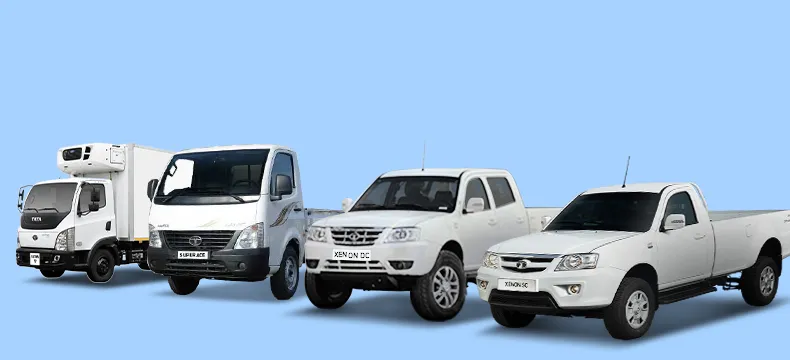1 Sep 2025

Food Truck: What Is a Food Truck?
- Tata Motors
- 1 Sep 2025
- Commercial Vehicle
Introduction
Food trucks are an underrated business opportunity in the food and beverage industry. In today's fast-paced world, people are juggling personal and professional responsibilities, leaving them with little time to eat.
They seek quick, on-the-go meals, creating a great opportunity for food trucks, which offer convenience, accessibility, and a variety of options for busy customers. If you're planning to start a food truck business or are already in the process, this blog provides essential details you need to know.
What is a Food Truck?
A food truck is a mobile kitchen that operates out of a truck or trailer. It serves food on the go. The size of a food truck varies depending on the cooking area and the number of staff working inside. Generally, you will need a medium to large-sized truck, ensuring enough space to create a proper kitchen setup and for the staff to operate comfortably within it.
A food truck can serve a wide variety of items, ranging from food and beverages to desserts. The menu can range from local to international cuisine. Generally, the menu items are quick to prepare and can be enjoyed on the go.
The food truck can either stay in one location or move from place to place, depending on how the business owner chooses to operate and the demand in different areas. In either case, food truck owners must be mindful of security, sanitation, and compliance with applicable regulations.
How Does a Food Truck Differ from Other Commercial Vehicles?
Here is a quick overview of how a food truck is different from a regular commercial truck:
-
Purpose:
A regular commercial truck transports goods and makes last-mile deliveries. Given its purpose, it is utilised across various industries.
A food truck is specifically used to create a mobile kitchen that serves meals on the go. It is primarily used in the food and beverage industry.
-
Structure:
A regular commercial truck appears like any other truck you would see on the road. Its cabin is designed to seat the driver and offer protection from weather conditions and other potential hazards. The truck also includes an enclosed cargo container that opens at the rear.
The food truck has a more distinctive structure. One side of the truck can be opened and closed with a shutter. This enables the food truck business owner to communicate and easily hand over customer orders.
-
Electricals:
A regular commercial truck typically features two types of lighting, chassis lights for vehicular visibility on the road and exterior headlights for visibility while driving. These lightings are standard across truck companies and their models.
A food truck is equipped with power supply boxes, LED lights, refrigeration units, and more in the cargo space. Truck companies typically customise these components to meet specific customer needs.
-
HVAC:
HVAC stands for Heating, Ventilation, and Air Conditioning. It regulates temperature, ventilation, and air quality to ensure comfort and proper food storage conditions.
In a regular commercial truck, the HVAC system primarily regulates the engine temperature and other related components.
What To Consider Before Starting a Food Truck Business?
Factors to consider before starting a food truck business:
- Running a food business can be challenging, especially when trying to attract a large number of customers at once. To ensure operational efficiency, it's crucial to choose the right type of truck.
- Choose a location that is easily visible and accessible to customers. You also need to be aware of and follow the regulations of that area.
- Safety is a non-negotiable factor; if the vehicle is compromised, your business and customers are at risk. Therefore, ensure that all safety protocols are strictly adhered to.
Conclusion:
Food trucks are proving to be a game changer in the food and beverage industry. People can often be found standing in long queues to get their hands on their favourite meal or beverage. If you're planning to start your own food truck business, now is the perfect time to do so, given its raging popularity. Start by getting the basics right – purchase the right food truck and then dive into pursuing your passion with full enthusiasm.
FAQs
How do food trucks differ from regular restaurants?
A food truck can move from one place to another to cater to its customers, which sets it apart from regular restaurants.
Are food trucks regulated?
Yes, food trucks are regulated by government authorities overseeing both road safety and food standards.
How do food trucks make money?
A food truck makes money by selling its menu items, either from a stationary location or while on the move.
- Tags


















